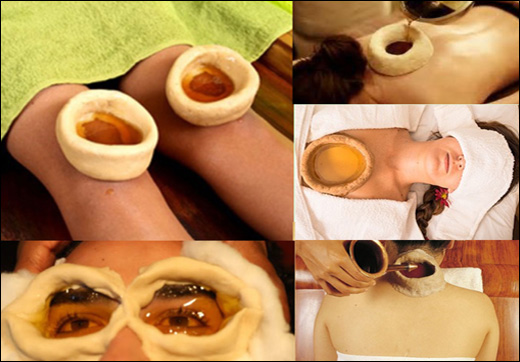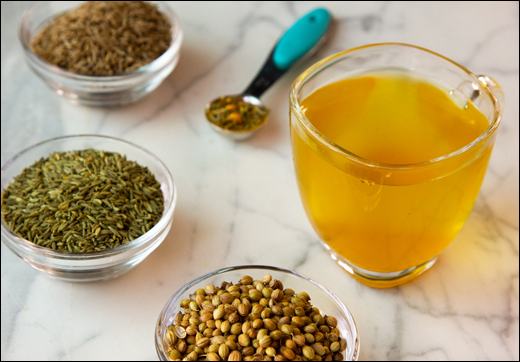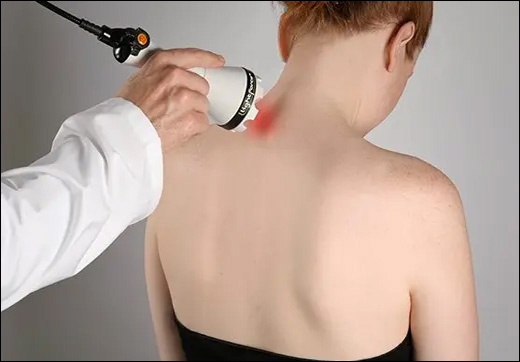ABSTRACT Panchkarma is an essential component of Ayurvedic Holistic Healing. It is based on cleansing the body's biological triads Vata, Pitta, and Kapha in order to maintain optimal physiological balance. Ayurveda believes that the balance of biological triads promotes...
ABSTRACT
Panchkarma is an essential component of Ayurvedic Holistic Healing. It is based on cleansing the body's biological triads Vata, Pitta, and Kapha in order to maintain optimal physiological balance. Ayurveda believes that the balance of biological triads promotes health and longevity. Upakarma are Panchkarma-related treatments that are used to bring out the best in the body's healing powers. Sarvang Abhyanga revitalizes the entire body by transporting the oxygen to all parts. Shirodhara brings peace to the mind by aligning the Mind-Body-Soul. Nasya is used to cleanse the biological triads of the Brain, head and neck. Rakta-mokshana or Bloodletting is intended for those aggravated doshas that have spread throughout the body. Today in this article we are going to discuss in detail about the Basti procedure or medicated enema.

INTRODUCTION
Basti is a Panchakarma process in which decoction or medicated oil is administered into garbhashaya (vaginal route), pakvashya (Anal route) or mutrashaya (Urinary route) by the help of yantra called basti yantra. Role of Basti is very special in Panchkarma treatment in management of various disorders. The site of action of Basti is considered as “???? ?????” which means from head to toe. One more Sanskrit verse for Basti is “????? ??????? ????????'' which means Basti is one of the best treatments for all types of Vata Vyadhi. It is not only considered as the best treatment for Vata vyadhi but also for Pitta and kaphaj vyadhis. On the other hand Basti helps in promoting longevity, delaying the aging process, provides strength to mind and body, and acts as aphrodisiac and rejuvenator. Let’s discuss this amazing treatment more in a further article.
DEFINITION OF BASTI
??????? ????? ??? ????????” According to Acharya Vaghbhata (As. Hr. su. 1/19), the medicine which is administered by using the urinary bladder (vasti) is known as Basti. ????????? ????? ??????? ??????? ????? ??? ?????? (Sharangdhar uttar Khand 5/1) which means administered medicines through anal route or vaginal route is known as Basti.
WHY THE BASTI NAMED AS BASTI
In ancient times sterilized and cleaned animal’s urinary bladder was used as an equipment for enema or Basti. The Sanskrit terminology for urinary bladder is basti that why this treatment is termed as Basti Treatment. Before using the urinary bladder of the animal they are sterilized by keeping in the medicated decoction. After that this sterilized basti kept open from one end (the bladder end) and the urethral end made leak proof with the help of leaves. Then this end connected to the pipe and inserted into the anal opening. The bladder squeezed by both hands and the medicine flows through the pipe and reaches to the intestines.
TYPES OF BASTI
On the basis of site
Pakvashya Gata (From anal route) Mutrashaya Gata (From urethral route) Garbhashya Gata (From vaginal route) Vrangata (From route of wound)On the basis of liquid used:
Niruha Basti - Medicated Decoction is used Anuvasana Basti - Medicated oil is usedOn the basis of Karma (Action):
Shodhan Basti - To expel out vitiated dosha from the body. Lekhana Basti - To eliminate dosha by scraping. Snehana Basti - To provide lubrication to the body. Brihmana Basti - For nourishing bodily tissues.On the basis of number of basti administered:
Karma Basti - In this total 30 Basti is to be administered, first basti is Anuvasana, then 12 Niruha, 12 anuvasana one by one and at last 5 Anuvasana is given. Kaal Basti - Total basti given in Kaal Basti is 16. First basti is anuvasana, then 6 nirhua and 6 anuvasana one by one and at last 3 anuvasana. Yog Basti - Total basti given in Yog Basti is 8. First basti is anuvasana, then 3 nirhua and 3 anuvasana one by one and at last 1 anuvasana.ROUTES OF ADMINISTRATION OF BASTI
Basti is administered through three routes anal, urethral and vaginal. Basti administers through the urethral route to manage the disorders of Uro-genital tract. Second route is the vaginal route, basti administered through this route is to manage the disorders of female reproductive disorders. The last one is the Anal route, this route is used to balance the Vata Dosha.
METHOD OF ADMINISTRATION OF BASTI
Administration method of Basti is divided into three parts that includes Poorva Karma (Preliminary measures), Pradhan Karma (Administration procedure) and Pashchaat Karma (Post Administration Measures).
1. Poorva Karma (Preliminary Measures)
First of all Dosha Analysis is to be done which means we have to evaluate whether the doshas are increased, decreased, lodged in dhatus (bodily tissues), moving upwards, moving downwards, moving towards limbs. On the basis of Dosha analysis, the type of Basti is to be selected. On the basis of Dravya Bheda there are two types of Basti and all the other types of Basti lie under these types and given as per the method how we administer both these Bastis. After the 7th day of Virechana (Medicinal Purgation) Niruha Basti (Medicated Decoction enema) is administered and the Anuvasana Basti is administered after the 9th day of Virechana (Medicinal Purgation).2. Pradhan Karma (Administration procedure)
Best time for administration of Basti is Early morning and the evening time that is considered as the time of Vata. the stomach must be empty at the time of Basti administration, as mentioned above it should be given after 3 hours of eating. Materials needed during the administration of Basti include enema bad, syringe, stove, measuring cup, oil or herbal decoction and towels. Enema bags are to be filled with the herbal oil or herbal decoction, allowing the air to pass from the tube. Make the person lie on the left side with left leg extended and flexed right knee. Lubricate the syringe tip and the anal orifice, slowly insert the tip of the syringe into the anal orifice, slowly release the clip of enema bag and allow the fluid to enter the colon. While allowing the fluid to enter the colon, massage it from outside in a counterclockwise direction.3. Pashchaat Karma (Post Administration Measures)
After that wait for the fluid to come out, the maximum time of fluid coming out is considered as 48 minutes (for Niruha Basti) and 12 hours for anuvasana basti. Then a person is to be prescribed with Pathya Diet (Diet suitable for him) which includes following things and known as samsarjana krama: After the expulsion of Basti Dravya (liquid), the next 7 days give a light diet to the patient. This includes peya (gruel of rice) and vilepi (gruel of red rice). Yush which includes akrita yush (Soup of green gram and horse gram) and Krita yush (soup of green gram and horse gram consisting of salt, ghee and spices like ginger, black pepper, etc). Other than that Akrit Mamsa ras and krita mamsa ras is given (meat soup with or without added salt, black pepper, ginger, etc). Peya served in 1st, 2nd and 3rd diet timings Vilepi served in 4th, 5th and 6th diet timings Yush is given in 7th, 8th and 9th diet timings Mamsa Ras served in 10th, 11th and 12th diet timings Normal diet can be given to the patient at the dinner time of the seventh dayIMPORTANCE OF BASTI CHIKITSA
???????? ??????????? ???? ????????? ???????????????????
?? ????? ????? ? ?? ?????????? ????? ??? ?????? ???????????
??? ??????????????????????? ??????????????? ? ????????
??????? ???????? ???? ????????????? ???? ?????????? ?????????
?????????????????? ????????? ?????? ??????????? ??????????(?.?? ?/??-??)
According to the above sanskrit phrase by Acharya Charaka, in this phrase it is mentioned that all diseases whether it is Shakhagata (in limbs), Koshtagata (in abdomen), margata (in vitals), urdhvagata (above clavicle), sarvanga (in all body parts), ekanga (in one body part), all these occur due to Vata Dosha. Vikshepa (deflates) and sanghata (bind) of Mala (body waste), Mutra (urine), Shleshma (kapha) and Pitta is also done by Vata. There is no other best treatment than Basti, so Basti is called Ardha Chikitsa which means half of the management of any disease is done by Basti only.
SAMYAKA YOGA, HEEN YOGA, ATI YOGA OF BASTI
1. Nirhuha Basti
Samyaka Yoga:
??????????????????????????? ?????????? ???????????????????????????
???????????? ???????????? ? ??? ? ??? ?????? ????????????????” (?.?? ?/??)
According to Acharya Charaka Samyaka Yoga (Symptoms of proper administration) of Niruha Basti are unforced excretion of stools, urine, flatus in the order of stools, then pitta, then kapha and then at last vayu. It causes lightness in the body, improves interest in eating food, kindles the digestive fire, clears the intestines, eliminates the disease for which Niruha Basti was administered, helps in regaining health and increasing strength.
Ayoga:
?????? ?????????????????????????? ???? ??????????????????? ???
?????????? ??????????????? ?????? ? ?????? ? ???????? ?????? (?.?? ?/??)
Acharya Charaka explained Ayoga (Symptoms of inadequate administration) of Niruha Basti as Pain and swelling in Head, heart, anus, urinary bladder, penis and vagina. Stuffy nose, cutting pain in anal region, excessive salivation, obstruction of vayu and urine, and the last symptom is shortness of breath.
Atiyoga
Atiyoga (Excessive) of niruha Basti includes following symptoms:
Throbbing or pricking pain in body Pain like somebody is hitting Tiredness Tremors Sleep Weakness Darkness in forepart of eyes Insanity Hiccough2. Anuvasana Basti
Samyaka Yoga:
??????????????? ??????? ???? ??????? ????????????? ??????????? (?.?? ?/??)
According to Acharya Charaka if Anuvasana Basti is administered properly then it shows following symptoms:
Elimination of Sakrit (Stools) and taila (medicated oil). Purification of Rakta Dhatu (Blood components), improves Buddhi (Intellect) and promotes indriya (sense organs) to perform their action. Induce sound sleep. Cause strength and lightness in the body. Normal expulsion of natural urges without any hindrance.Ayoga:
??? ??????? ??????????????????? ???? ???????? ? ????????
??????? ?????????????????? ??????????????????? ???????” (?.?? ?/??)
If Anuvasana Basti is administered improperly it causes pain in following regions:
Lower part of body Abdomen Arms Side and back of chestOther than that it causes roughness and dryness in the body and leads to obstruction in the passage of urine, stools and flatus.
Atiyoga:
??????????????????????? ?????????? ????????????????(?.?? ?/??)
If the Anuvana Basti is excessively administered then the Basti leads to following issues
Nausea Unconsciousness Mental fatigue Exhaustion Fainting Griping14 TYPES OF BASTI YOGA AND THEIR INDICATIONS IN PARTICULAR CONDITIONS
MADHU TALIKA BASTI Ingredients: Madhu 20 ml (honey), Tila Tail 20 ml (Sesame Oil), Powder of fennel 10 gm (Foeniculum vulgare), Saindhava Lavana 10 gm (Rock Salt), Madanphal Powder 10 gm (Randia dumetorum) and Erandmool Kwath (Decoction of root of Ricinus communis). Method Of Preparation: Make a decoction of Erand Mool powder by adding 50 gm of it in 100ml of water. Firstly add saindhava lavan into pestle, then add fennel and madanphal churna. Mix it well with the help of mortar by adding honey and sesame oil and at last mix well with Erand Mool Kwath. Indications: In Vataj Disorders, as a rejuvenator, diabetes, piles, hernia, worm infestation, skin conditions, improves strength and improves appetite, nourishes body and improves vigour. VAITRAN BASTI Ingredients: Cow milk 500 ml, Sesame Oil 50 ml, Tamarind 50 gm, Jaggery 20 gm and Rock Salt 10 gm. Method Of Preparation: Take 50 gm of tamarind and 20 gm of jaggery, boil it in 50 ml of water. Once it becomes lukewarm, strain it. Then mix it in boiled 500 ml of cow milk. Firstly add rock salt in the pestle then sesame oil and then the rest of liquid, mix it well and use it. Indications: Rheumatoid Arthritis, Sciatica, any type of pains, Constipation, All Vataj disorders. PICCHA BASTI Ingredients: Mochras (Bombax malabaricum) 80 gm, Lodhra (Symplocos racemosa) 20 gm, Kutaj (Holarrhena antidysenterica) 10 gm, Cow milk 50 ml and Cow ghee 10 ml. Method Of Preparation: Take Mochras (Bombax malabaricum) 80 gm, Lodhra (Symplocos racemosa) 20 gm and Kutaj (Holarrhena antidysenterica) 10 gm, add all of these in 800 ml of water, boil it until it becomes 200 ml. Now add Cow milk 50 ml and Cow Ghee 10 ml and mix well with the help of pestle and mortar. Indications: Bloody Diarrhoea. KSHIR BASTI Ingredients: Shatavari (Asparagus racemosus) 500 gm, Cow's Ghee 20 ml, Sesame oil 20 ml and Honey 20 ml. Method Of Preparation: Take Shatavari 500 gm, add 100 ml of Cow's milk and 100 ml of water, boil it till it remains 100 ml. Then add Cow's ghee 20 ml, sesame oil 20 ml and honey 20 ml. Indications: Hyperacidity and for increasing strength. SHUKRAVARDHAK BASTI Ingredients: Ashwagandha powder 50 gm (Withania somnifera), Cow’s milk 50 ml, Honey 20 ml, Sesame oil 20 ml, Cow’s ghee 20 ml and rock salt 5 gm. Method Of Preparation: Take Ashwagandha churna 50 gm and add in 800 ml of water, boil it till it gets reduced to 100 ml. Then add Cow’s milk, Honey, Cow’s ghee, Sesame oil and rock salt. Indications: For increasing Sperm Production and or increasing strength. UKTA RATH BASTI Ingredients: Erand Mool 50 gm (Ricinus communis), Honey 20ml, Sesame Oil 10 ml, Vacha 10 gm (Acorus calamus), Pippali 10gm (Piper longum), Madanphal 10 gm (Randia dumetorum) and rock salt 10 gm. Method Of Preparation: Take Erandmool powder 50 gm, add 1000 ml of water in it, boil it until it is reduced to 100 ml. Add rock salt, then Pippali, vacha, madanphal, mix it well. After that add honey, sesame oil and erand mool decoction. Indications: Rejuvenator and Vataj Vyadhi hara. KRIMIGHAN BASTI Ingredients: Triphala Kwath 100ml, Vidang churna 10gm (Embelia ribes), Nagarmotha 10 gm (Cyperus scariosus), Shigru Churna 10 gm (Moringa oleifera) and Madanphal Churna (Randia Dumetorum) 10 gm. Method Of Preparation: Make Triphala kwath and add all the powders in it, mix it well and use as Basti. Indications: In case of Worm infestation. LEKHAN BASTI Ingredients: Triphala Kwath, Cow’s Urine, Honey and Yavakshar (Hordeum vulgare) Method Of Preparation: Make Triphala Decoction and mix all the ingredients well. Indications: It helps in scraping of doshas and helps in obesity. CHAKHSHUSHYA BASTI Ingredients: Madhu 20 ml (honey), Tila Tail 20 ml (Sesame Oil), Powder of fennel 10 gm (Foeniculum vulgare), Saindhava Lavana 10 gm (Rock Salt), Madanphal Powder 10 gm (Randia dumetorum), Erandmool Kwath (Decoction of root of Ricinus communis) and Yashthimadhu (Glycyrrhiza glabra) 30 gm. Method Of Preparation: Make a decoction of Erand Mool powder by adding 50 gm of it in 100ml of water. Firstly add saindhava lavan into pestle, then add fennel and madanphal churna and mulethi churna. Mix it well with the help of mortar by adding honey and sesame oil and at last mix well with Erand Mool Kwath. Indications: Eye Disorders, to improve vision. MUTRA KRICHA BASTI Ingredients: Decoction of Gokshura (Tribulus terrestris), Pashaanbhed (Bergenia ligulata), Yashthimadhu (Glycyrrhiza glabra) and Mishri (Rock sugar). Method Of Preparation: Make Decoction of Gokshura and add all other ingredients into it. Indications: Urinary Obstruction and Difficulty Urine. SHEET PITTAHARA BASTI Ingredients: Gairika (Red Ochre) 10 gm and Water 25 ml. Method Of Preparation: Take 25 ml of water and add Gairika into it. Indications: For Vataj and Pittaj Diseases. RAKTA BASTI Ingredients: In this Basti Rakta (Blood) is used as a Basti ingredient, it can be of Ajadi gana rakta (goat, sheep, cow, elephant, camel, horse, donkey, buffalo) or Rakta of human. Indications: Increasing HB. UTTAR BASTI For Conception: Phal Kalyan Ghrit - 150 ml For Miscarraige: Kutaj (Holarrhena antidysenterica), Gambhari (Gmelina arborea), cow’s ghee. For Uterine Prolapse and Vaginal Prolapse: Jyotishmati (Celastrus paniculatus), Ashwagandha (Withania somnifera), Mochras (Bombax malabaricum), Lodhra (Symplocos racemosa), Panchvalkal Kwath - Vata (Ficus bengalensis), Udumbar (Ficus glomerata), Plaksha (Ficus infectoria), Ashwatta (Ficus religiosa) and Parisha (Thespesia populnea). Indications: For Vataj and Pittaj Diseases. SHIRO BASTI For conception: Phal Kalyan Ghrit - 150 ml. For Miscarraige: Kutaj (Holarrhena antidysenterica), Gambhari (Gmelina arborea), cow’s ghee. Indications: For Vataj and Pittaj Diseases. For Uterine Prolapse and Vaginal Prolapse: Jyotishmati (Celastrus paniculatus), Ashwagandha (Withania somnifera), Mochras (Bombax malabaricum), Lodhra (Symplocos racemosa), Panchvalkal Kwath - Vata (Ficus bengalensis), Udumbar (Ficus glomerata), Plaksha (Ficus infectoria), Ashwatta (Ficus religiosa) and Parisha (Thespesia populnea). Ingredients: Dhanwantharam Oil. Method Of Preparation: In this basti a basti yantra (lethera head cap) is fitted over the head and oil is filled in that for a particular period of time. Indications: Chronic headache or all types of diseases of head, Facial paralysis.As you read earlier above there is the use of powders of various herbs in preparation of all 14 types of Basti. For this you can use Planet Ayurveda’s single herbal powders for better results. Advantage of using these powders is that they are free from any kind of added preservatives, fillers, resins, starch, colour, gum, etc. These powders are prepared under the guidance of M.D. Ayurveda doctors in the proper way, so use Planet Ayurveda’s Single herbal powders for better efficacy.
CONCLUSION
Basti is a Panchakarma process in which decoction or medicated oil is administered into garbhashaya (vaginal route), pakvashya (Anal route) or mutrashaya (Urinary route) by the help of yantra called basti yantra. It is one of the best treatments for all kinds of Vataj Disorders. So if somebody is suffering from any kind of Vataj disorders they must approach basti as the first line of treatment. In the above article all about Basti is explained including what kind of procedure it is, what different kinds of Basti Yoga (compositions) are used in case of particular health conditions. So you can take Basti if you are suffering from any kind of conditions mentioned above.













